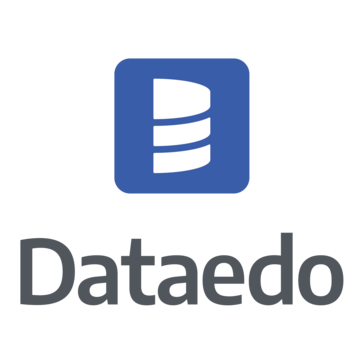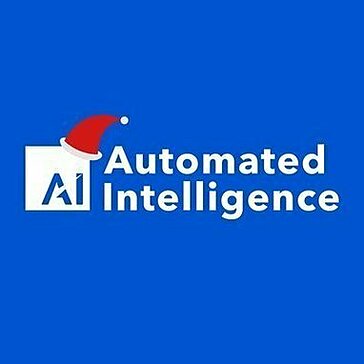4.25
Dataedo Review
Explore our Dataedo review covering key features, security, and pricing. We assess updates, support, and value for money. See if Dataedo fits your needs!

Comprehensive overview and target audience
Dataedo serves as a powerful data catalog and documentation tool designed to demystify complex data structures within organizations. Its primary function is to help users understand; document; and govern their data assets effectively. This makes data more accessible; trustworthy; and easier to leverage for insights and decision making processes.
The target audience for Dataedo is broad; encompassing various roles that interact with data regularly. Key users include:
- Data analysts and scientists who need to quickly find and understand relevant data for their analysis.
- Database developers and administrators responsible for managing and maintaining database schemas.
- Data stewards and governance teams tasked with ensuring data quality; compliance; and policy enforcement.
- Business intelligence professionals building reports and dashboards requiring reliable data sources.
- IT departments seeking a centralized inventory of data assets across disparate systems.
Essentially; any organization struggling with data discovery; tribal knowledge; or data source ambiguity can benefit significantly from implementing Dataedo. It provides a shared platform for collaboration; reducing onboarding times for new team members and minimizing errors stemming from misunderstood data.
Considering its feature set against its cost structure; many users report strong `Dataedo value for money`. The tool centralizes critical metadata; improves productivity; and supports compliance efforts; offering tangible returns on investment. A `Dataedo pricing comparison` with other enterprise level solutions often highlights its competitive positioning; especially for teams needing comprehensive documentation features without excessive complexity. Prospective buyers should evaluate the available tiers based on their specific connector requirements and team size.
The platform is not static; the development team consistently releases `Dataedo updates and new features`; enhancing connectivity; usability; and governance capabilities. This commitment ensures the tool evolves alongside industry trends and user needs. Security is also addressed through `Dataedo security features`; including role based access controls which help manage permissions and ensure sensitive metadata is handled appropriately. Furthermore; robust `Dataedo support and training resources`; including extensive online documentation; tutorials; and responsive customer support; empower users to maximize their utility of the software effectively; ensuring teams can get started quickly and resolve any issues that arise. This comprehensive support system contributes significantly to the overall positive user experience and successful adoption within organizations.
User experience and functional capabilities
Dataedo generally receives positive feedback regarding its user experience, blending robust functional capabilities with a relatively intuitive interface. Many Dataedo user experience insights point towards a design that successfully caters to both technical database administrators and less technical business users. The desktop application provides a rich environment for documentation, while the web portal offers accessible discovery and collaboration features. Getting started involves connecting to data sources, importing metadata, and then enriching it with definitions, relationships, and classifications.
Understanding how to use Dataedo effectively revolves around leveraging its core features: the data dictionary for detailed object definitions, the business glossary for standardized terminology, ER diagrams for visual schema understanding, and data lineage tracking to see data flow. The process typically begins with setting up source connections, which is straightforward for supported databases. Users then navigate schemas, document tables and columns, assign glossary terms, and map dependencies. Best practices for maximizing value often involve establishing clear documentation standards and encouraging team wide participation.
The Dataedo implementation guide provided by the vendor offers valuable assistance for initial setup and configuration, helping organizations integrate the tool into their existing workflows smoothly. However, like any comprehensive software, users might encounter some hurdles. Common problems with Dataedo sometimes relate to performance with extremely large databases during the initial import or complexity in setting up advanced configurations like custom fields or complex lineage mapping. Ensuring adequate server resources and following documentation carefully usually mitigates these issues.
A significant strength lies in integrating Dataedo with other tools. Its ability to connect to a wide array of data sources, including relational databases, data warehouses, and BI platforms, is crucial. Export functionalities and API access further enhance its capacity to fit within a broader data management ecosystem, allowing metadata to be shared with governance platforms or data quality tools. This interoperability is key for organizations aiming for a holistic view of their data landscape.
Continuous improvement is evident through regular Dataedo updates and new features. The development team actively refines the user interface, expands connector options, and enhances governance capabilities based on user feedback and industry trends. These updates ensure the platform remains relevant and powerful. Adopting best practices for documentation consistency, user training, and workflow integration will significantly enhance the overall benefit derived from Dataedo, transforming it from just a documentation tool into a central pillar of an organization’s data intelligence strategy.
Who should be using Dataedo
Dataedo caters to a wide range of professionals involved in the data lifecycle. Essentially, anyone who needs to understand, document, discover, or govern data assets within an organization stands to benefit. This includes technical roles like Database Administrators and Developers who manage the underlying structures, Data Analysts and Scientists requiring trustworthy data for analysis, and Business Intelligence professionals building reports.
These users leverage Dataedo to overcome common data challenges. Analysts can quickly locate and interpret data fields, reducing time spent deciphering cryptic column names. Developers use it to document schemas accurately, ensuring consistency and aiding maintenance. Data Stewards and Governance teams rely on Dataedo to enforce policies, track lineage, and build a comprehensive business glossary, improving data quality and compliance across the board. IT departments gain a centralized inventory, simplifying asset management.
A typical Dataedo use case scenario involves organizations grappling with complex, poorly documented databases perhaps inherited through mergers or legacy systems. Another common scenario is establishing a formal data governance program where Dataedo serves as the central repository for metadata, definitions, and rules. It is also invaluable during system migrations or when onboarding new team members who need to quickly understand the data landscape. Improving the reliability and understanding of data sources for critical BI reporting is yet another key application.
Organizations prioritizing data literacy, transparency, and collaboration will find Dataedo particularly effective. It bridges the gap between technical teams managing the data and business users consuming it. To maximize its potential across these diverse groups, adhering to Best practices for Dataedo implementation and ongoing use is crucial. This involves establishing clear documentation standards, defining roles for contribution and maintenance, and encouraging widespread adoption through training. Consistent application of these practices ensures the data catalog remains accurate, comprehensive, and truly valuable for everyone from data engineers to business stakeholders seeking clarity.
Unique Features offered by Dataedo
Dataedo distinguishes itself through a range of customization options and unique features designed to adapt to specific organizational needs and enhance data understanding. Unlike rigid cataloging solutions, Dataedo offers significant flexibility. Users can enrich the automatically imported metadata with extensive custom descriptions, alias names for technical objects, and importantly, custom fields. These custom fields allow organizations to track specific information relevant to their processes, such as data ownership details, sensitivity levels beyond predefined classifications, or project associations, effectively tailoring the catalog to unique workflows.
This level of adaptability is key when considering Customizing Dataedo for business growth. As organizations evolve, their data governance requirements and documentation standards change. Dataedo’s ability to modify classifications, define custom properties for different object types, and even apply custom branding to the web catalog ensures the tool remains aligned with business objectives and internal standards. Furthermore, the robust Business Glossary module allows for the creation and management of standardized business terminology, linking technical assets to understandable business concepts, a crucial step in fostering data literacy across departments.
Several features stand out. The interactive ER diagrams provide a visual representation of database structures and relationships, aiding comprehension significantly. Data lineage tracking, visualized clearly within the tool, helps users understand data flow from source to destination, which is invaluable for impact analysis and regulatory compliance. Dataedo also supports exporting documentation to various formats like PDF and HTML, facilitating sharing and offline access. While powerful for large enterprises, these carefully curated features also make Dataedo for small businesses a viable option, providing essential structure and governance without overwhelming complexity.
A major strength lies in Integrating Dataedo with other tools. Its wide range of native connectors covers databases, data warehouses, and BI platforms. Beyond connections, Dataedo often allows linking objects within its catalog directly to reports in BI tools or tables in other systems. Its REST API enables programmatic access to metadata, allowing for deeper integration with bespoke internal applications, master data management hubs, or broader data governance frameworks. This interoperability ensures Dataedo functions not as an isolated silo, but as a connected component within the larger data ecosystem, enhancing visibility and control over data assets across the entire organization.
Pain points that Dataedo will help you solve
Many organizations grapple with significant data challenges that hinder productivity and decision making. Does your team struggle with finding the right data quickly. Is valuable information locked away as tribal knowledge, undocumented and inaccessible when key personnel leave. Do inconsistent definitions and ambiguous data fields lead to errors in analysis and reporting. These common frustrations often result in wasted time, duplicated effort, and a fundamental lack of trust in data assets. Dataedo directly addresses these critical issues, providing a structured approach to understanding and managing your data landscape.
Dataedo tackles the pain point of poor data discovery head on. Instead of analysts wasting hours hunting for data or deciphering cryptic table names, Dataedo provides a searchable catalog with clear definitions and context. It eliminates the reliance on tribal knowledge by creating a centralized, documented source of truth for your databases, data warehouses, and BI reports. This formal documentation improves data quality perception and actual quality over time. Furthermore, establishing clear data lineage helps understand data flows, significantly easing impact analysis for changes and supporting compliance requirements which is often a major headache. It helps build a foundation for stronger data governance initiatives.
Collaboration often suffers when teams lack a shared understanding of data. Dataedo provides a common platform, fostering communication between technical teams and business users. This accelerates onboarding for new team members, who can quickly familiarize themselves with the data environment instead of relying on lengthy, piecemeal explanations. The flexibility of the platform makes Dataedo for different businesses sizes a practical solution, from smaller teams needing basic documentation to large enterprises implementing complex governance frameworks. Customizing Dataedo for business growth is straightforward; its ability to adapt through custom fields and definitions ensures the tool evolves alongside your organization’s needs, solving future problems before they arise.
Finally, data silos represent a persistent pain point. Integrating Dataedo with other tools, leveraging its extensive connectors and API, breaks down these barriers. By connecting metadata across your ecosystem, from source databases to BI platforms, Dataedo provides a unified view, eliminating inconsistencies and ensuring everyone works from the same playbook. It transforms fragmented data knowledge into a cohesive, accessible, and trustworthy organizational asset, directly solving the inefficiencies and risks associated with poorly understood or governed data. Dataedo helps turn data chaos into clarity.
Scalability for business growth
As businesses expand, their data landscapes inevitably grow in volume, variety, and complexity. A critical requirement for any data management tool is its ability to scale alongside this growth, ensuring it remains effective and does not become a bottleneck. Dataedo is designed with scalability in mind, allowing organizations to manage an ever increasing number of data sources, users, and metadata entries without compromising performance or usability. This inherent scalability ensures that your investment in data documentation and governance continues to deliver value as your operational scope widens.
Supporting growth means more than just handling larger datasets. It involves maintaining consistency, ensuring data discoverability, and upholding governance standards across a more complex environment. Dataedo facilitates this through several key aspects:
- Its architecture is built to connect to and manage metadata from a growing list of diverse data sources, from traditional databases to modern cloud platforms and BI tools.
- Performance considerations ensure that even as the catalog expands with thousands of tables and millions of objects, metadata import, search, and navigation remain responsive.
- User management features, including role based access controls, allow organizations to efficiently manage permissions for larger, more diverse teams of data consumers and contributors.
The ability to adapt the tool is crucial here. Customizing Dataedo for business growth means leveraging its flexible framework; including custom fields and classifications; to accommodate new business units, evolving compliance requirements, or different project needs that arise during expansion. This adaptability is central to Customizing Dataedo for business scalability; ensuring the platform configuration can evolve to meet the demands of increased operational complexity and data volume. It allows the data catalog to mirror the changing structure and priorities of the growing business, maintaining its relevance and utility. Dataedo proves itself not just as a documentation tool, but as a scalable foundation for long term data intelligence and governance, supporting your journey from small datasets to enterprise wide data management.
Final Verdict about Dataedo
Dataedo emerges as a robust and highly valuable solution for organizations seeking to gain control over their complex data environments. It effectively bridges the gap between technical data management and business user understanding, offering comprehensive features for data documentation, cataloging, and discovery. Its ability to centralize metadata, visualize relationships through ER diagrams, and track data lineage addresses critical pain points like poor data discovery, reliance on tribal knowledge, and challenges in maintaining data governance standards. The user experience is generally positive, providing a powerful desktop application for deep documentation work and an accessible web portal for broader collaboration and data exploration.
The platform demonstrates significant flexibility through its customization options. Custom fields, configurable classifications, and a well structured business glossary allow businesses to tailor the tool precisely to their specific governance frameworks and operational needs. This adaptability, combined with its capacity to connect to a wide array of data sources and integrate with other tools via its API, makes Dataedo a versatile component within a larger data management ecosystem. It successfully solves common frustrations related to inconsistent definitions, time wasted searching for data, and difficulties in ensuring compliance.
While the initial import for extremely large databases might require attention to resources, and achieving maximum value necessitates consistent team adoption and well defined documentation standards, these are considerations common to implementing any comprehensive data catalog. The platform’s architecture is designed for growth, ensuring that Dataedo can scale effectively alongside increasing data volumes, user numbers, and source complexity, making it a sound long term investment.
Our **Final verdict on Dataedo** is overwhelmingly positive. It stands out as a powerful, user friendly, and adaptable data catalog and documentation tool. For organizations committed to improving data literacy, enhancing collaboration, strengthening data governance, and ultimately building trust in their data assets, Dataedo offers a compelling value proposition and is a highly recommended solution. It successfully turns data chaos into clarity and provides a solid foundation for data intelligence initiatives.
Advantage
Disadvantage
Centralizes data knowledge easily
Automates metadata discovery from many sources
Visualizes data lineage clearly
Fosters team collaboration on data definitions
Creates comprehensive business glossary quickly
Disadvantage
Steeper learning curve for advanced functionality
Pricing can be prohibitive for smaller teams
Potential UI lag with very large databases
Fewer native connectors than some competitors
Collaboration features lack some modern integrations
Rating
Standard
$99 per Month Paid Monthly
- Data dictionary
- ERDs
- Data profiling
- Document databases
- Share HTML
Data Catalog
$159 per Month Paid Monthly
- All features in Standard+
- Data lineage
- Data classification
- PII detection
- Reference data
Standard
$948 per Year Paid Yearly
- Data dictionary
- ERDs
- Data profiling
- Document databases
- Share HTML
Data Catalog
$1548 per Year Paid Yearly
- All features in Standard+
- Data lineage
- Data classification
- PII detection
- Reference data
Product Support
Web Based
Windows
Mac OS
Linux
Android
iOS
Phone Support
Email/Help Desk
AI Chat Bot
Live Support
24/7 Support
Forum & Community
Knowledge Base
Live Online
Documentation
Videos
In Person
Webinars
Company: Dataedo, Inc.
Email: sales@dataedo.com
Address:
1013 Centre Road, Suite 403-B, Wilmington, DE 19805, USAPhone: Not Available
Implementation
Web Based
Windows
Mac OS
Linux
Android
iOS
Support
Phone Support
Email/Help Desk
AI Chat Bot
Live Support
24/7 Support
Forum & Community
Knowledge Base
Training
Live Online
Documentation
Videos
In Person
Webinars
Group text
Company: Dataedo, Inc.
Email: sales@dataedo.com
Address:
1013 Centre Road, Suite 403-B, Wilmington, DE 19805, USA
Phone: Not Available
Alternative Products
Frequently Asked Questions
What is Dataedo primarily used for?
Dataedo is primarily used for creating a comprehensive data catalog, documenting databases and data sources, building data dictionaries, and managing business glossaries to improve data understanding and governance across an organization.
How can Dataedo help me?
Dataedo can help you by centralizing knowledge about your data assets, making it easier to discover and understand data, fostering collaboration between IT and business teams, improving data quality awareness, simplifying onboarding for new team members, and supporting data governance and compliance initiatives.
What are the key features of Dataedo?
Key features include automated metadata import from various sources, a central data dictionary repository, business glossary creation and management, data lineage visualization (tracking data flow), data profiling, relationship discovery (ERDs), rich documentation capabilities with custom fields and descriptions, collaboration tools (like comments and tasks), and flexible export options (HTML, PDF, Excel) for sharing documentation.
Which databases and data sources does Dataedo support?
Dataedo supports a wide range of databases and data sources, including popular relational databases (like SQL Server, Oracle, PostgreSQL, MySQL, MariaDB), cloud data warehouses (Snowflake, Redshift, Azure Synapse, Google BigQuery), NoSQL databases (like MongoDB), file sources (Excel, CSV), and connections to BI tools (like Tableau, Power BI) often via their underlying sources or metadata.
How easy is Dataedo to set up and use?
Setup involves installing the desktop application and connecting to your data sources, which is generally straightforward using provided wizards and connection guides. While exploring all features takes time, the core interface for browsing, documenting, and searching the catalog is designed to be relatively intuitive, and the web catalog provides an easy-to-use interface for consumers of the documentation.
What is Dataedo's pricing model?
Dataedo typically uses a subscription-based pricing model, often priced per “editor” user (those who create or modify documentation) annually. Different subscription tiers may exist offering varying levels of features or support. Viewer access (read-only, typically via the web portal) is often included generously or priced differently. Specific pricing usually requires contacting their sales team for a quote tailored to organizational needs.
Who is Dataedo best suited for?
Dataedo is best suited for organizations of various sizes (from mid-market to large enterprises) that need to formally document their data landscape, improve data literacy, and establish data governance practices. Key users include data analysts, data stewards, database administrators (DBAs), data engineers, business analysts, and IT departments looking to create a single source of truth for their data assets.
Is Dataedo worth it?
Whether Dataedo is “worth it” depends heavily on your organization’s specific pain points regarding data documentation, discovery, and governance. If your team struggles with undocumented data sources, tribal knowledge, time wasted searching for data definitions, or meeting compliance requirements, the structure, collaboration features, and centralized knowledge base provided by Dataedo can offer significant value and a strong return on investment compared to manual documentation efforts or the potential costs associated with data misuse or misunderstanding.







